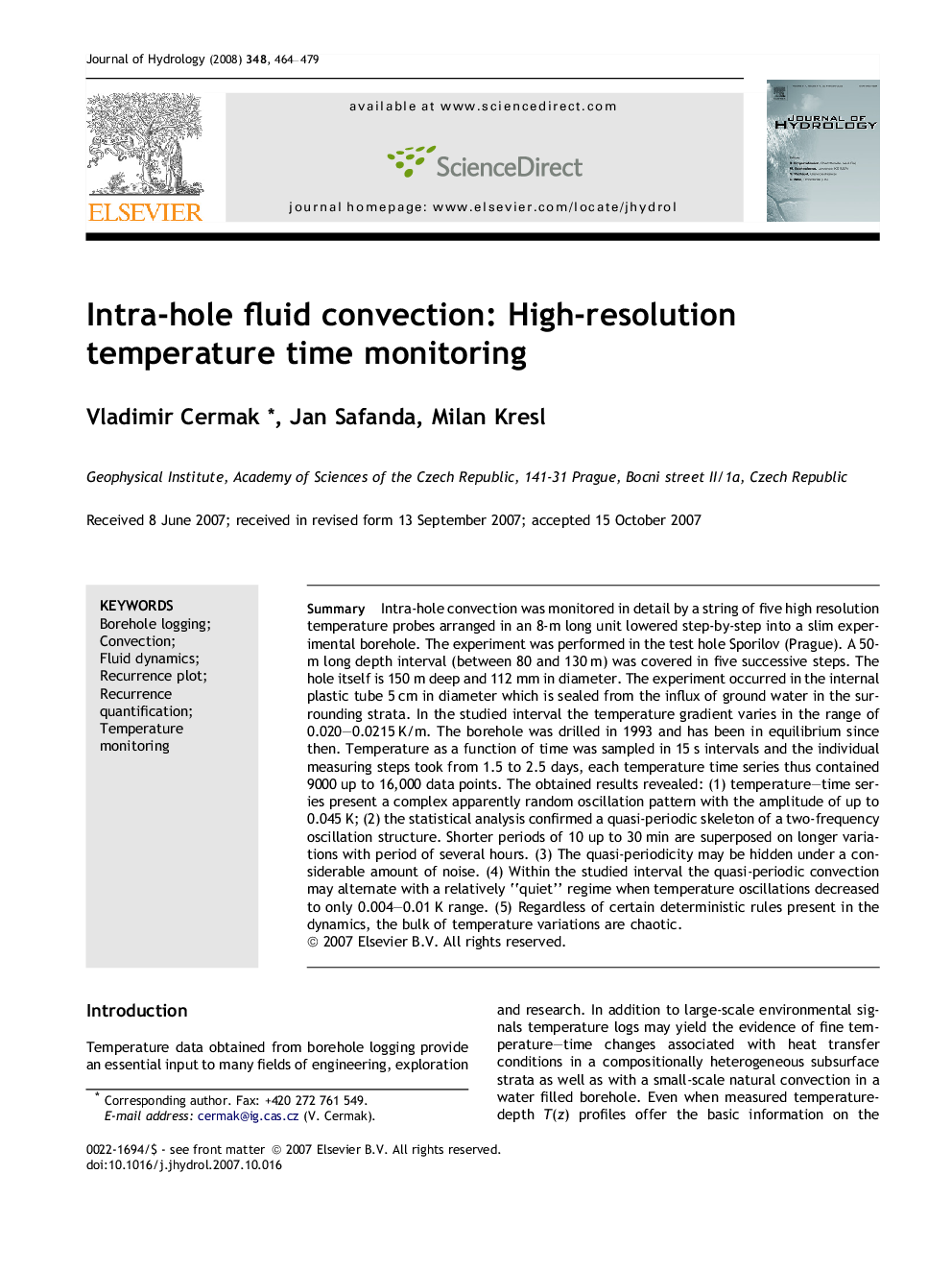| Article ID | Journal | Published Year | Pages | File Type |
|---|---|---|---|---|
| 4579713 | Journal of Hydrology | 2008 | 16 Pages |
SummaryIntra-hole convection was monitored in detail by a string of five high resolution temperature probes arranged in an 8-m long unit lowered step-by-step into a slim experimental borehole. The experiment was performed in the test hole Sporilov (Prague). A 50-m long depth interval (between 80 and 130 m) was covered in five successive steps. The hole itself is 150 m deep and 112 mm in diameter. The experiment occurred in the internal plastic tube 5 cm in diameter which is sealed from the influx of ground water in the surrounding strata. In the studied interval the temperature gradient varies in the range of 0.020–0.0215 K/m. The borehole was drilled in 1993 and has been in equilibrium since then. Temperature as a function of time was sampled in 15 s intervals and the individual measuring steps took from 1.5 to 2.5 days, each temperature time series thus contained 9000 up to 16,000 data points. The obtained results revealed: (1) temperature–time series present a complex apparently random oscillation pattern with the amplitude of up to 0.045 K; (2) the statistical analysis confirmed a quasi-periodic skeleton of a two-frequency oscillation structure. Shorter periods of 10 up to 30 min are superposed on longer variations with period of several hours. (3) The quasi-periodicity may be hidden under a considerable amount of noise. (4) Within the studied interval the quasi-periodic convection may alternate with a relatively “quiet” regime when temperature oscillations decreased to only 0.004–0.01 K range. (5) Regardless of certain deterministic rules present in the dynamics, the bulk of temperature variations are chaotic.
